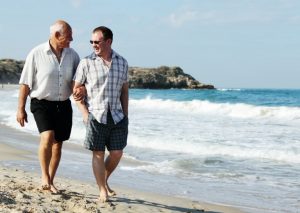Improving cancer survival and recovery with exercise
Everyone knows that exercise is good for us – but what if you’re a cancer patient?
If you are undergoing or recovering from cancer treatment, you might think it’s important to rest, but research shows that exercise is of benefit to most cancer patients, both during and after treatment. Evidence suggests that most people slow down after a cancer diagnosis. Stress, depression, and feeling sick or fatigued from cancer or its treatment, all tend to make people less active. The problem is, most people remain sedentary well after treatment ends.
As a long-term solution to the problem of fatigue, taking it easy and avoiding activity is not a good solution. It is important for cancer survivors to get back to exercise as it helps their recovery and boosts long term survival rates. In other words: if you’ve down-shifted your activity level since your cancer diagnosis, now is the time to rev it back up and increase your physical activity.
When should you start exercising after a cancer diagnosis and treatment?
The short answer is – As soon as possible! Every person’s situation is different so before starting a moderate to vigorous exercise program, see your doctor or exercise professional. Accredited Exercise Physiologists can help design the right exercise program for you so look for someone who is registered with Exercise & Sports Science Australia (ESSA).
Being active can help manage some of the common side effects of chemotherapy and radiation, as well as speed up your recovery time and improve your quality of life. Research has shown that for some cancers, exercise can improve how well your body responds to treatment. Along with a healthy diet, being physically active can also help reduce the risk of cancer reoccurring. It also helps reduce the risk of developing other serious health problems such as diabetes, heart disease and many others.



According to the Clinical Oncology Society of Australia (COSA) position statement on exercise in cancer care, exercise should be prescribed to all cancer patients as a standard part of their cancer care, to help manage the effects of cancer and its treatment. ESSA also encourages people with cancer to exercise.
Several recent studies suggest that higher levels of physical activity are associated with a reduced risk of the cancer coming back, and a longer survival after a cancer diagnosis. Women who exercise after completing breast cancer treatment live longer and have less recurrence, according to recent evidence. Colorectal cancer survivors who exercised lived longer than those who didn’t, two recent clinical trials showed. Also, in studies looking at several different cancers, being overweight after completing treatment was associated with shorter survival times and higher risk of cancer recurrence.
Unless you’re already very active, though, you shouldn’t expect yourself to achieve this right away. As with anything else, the key is to set small, achievable goals and build on your successes. If you’ve already been active – keep it up! If you haven’t been active, start slowly, but start something. Try to find an activity you enjoy. You may want to buddy up with someone at the same fitness level. Having a friend to work out with will increase your motivation.
Whatever you do, don’t get discouraged. Doing anything is better than doing nothing. The key is to start slowly and build your body’s energy over time, your body has been through a lot and it is necessary to challenge it gradually, and allow it the time to adapt.
You can increase your physical activity without joining a gym, or even leaving the house. Just building more activity into your daily routine can get you started. Here are a few suggestions:
- Take the stairs where you can instead of riding the elevator.
- Buy a pedometer (step counter) and increase your number of steps daily.
- Take frequent breaks throughout the day to stand, stretch, and take short walks.
- Check the pantry. Lifting cans, detergent bottles, or anything heavy will build muscle. Do three sets of 10 lifts, or until you feel your muscles feel tired.
What if you’re just too exhausted to exercise?
Sometimes fatigue can be so severe that it is important to rest temporarily. Rest for a little while, then start again slowly and build up. Your energy level will increase, over the long term.
Are there any downsides to exercise for cancer patients?
The risks for cancer survivors are not too different from the general population. Musculoskeletal injuries such as soreness, strains and sprains-are the most common. Exercise for cancer patients may carry a slightly higher risk for heart problems. It is always a good idea to have a complete physical exam by an oncologist and exercise physiologist before starting a moderate-to-vigorous exercise program.
You didn’t make it through chemo just to end up on the couch. Get together with your doctor, get an exercise program, and get moving!
